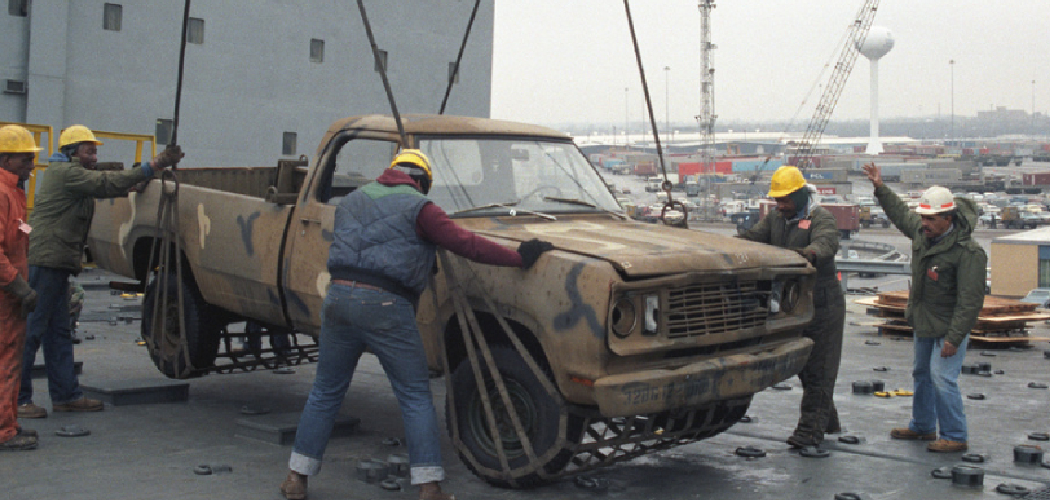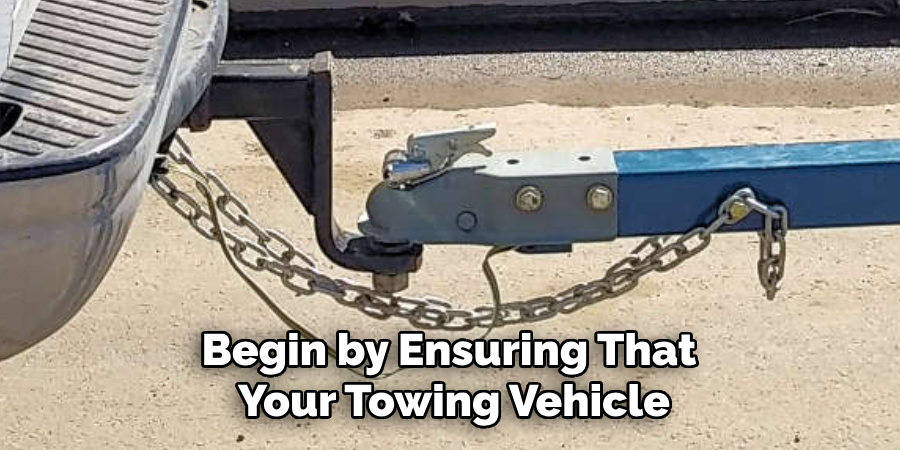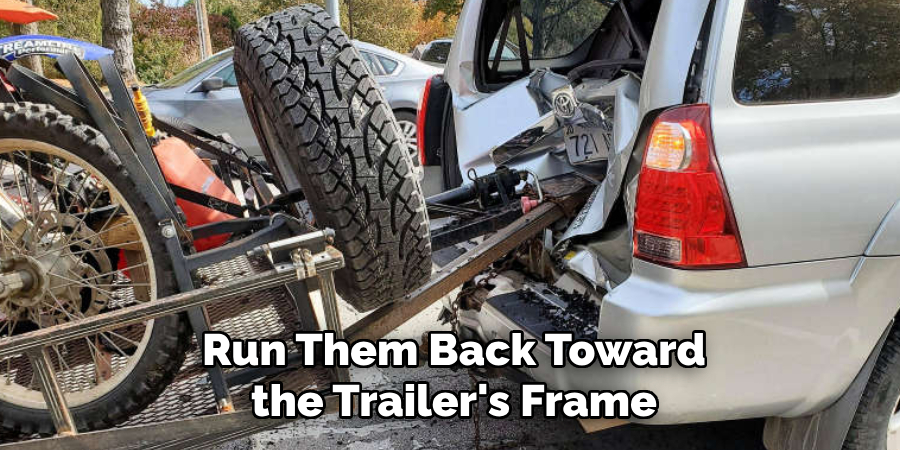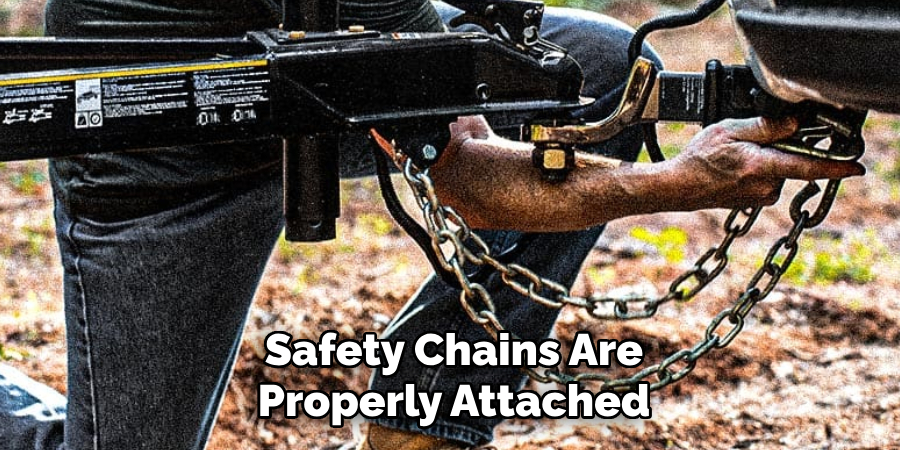When towing a trailer, ensuring the safety of both the driver and other road users is paramount. One crucial aspect of trailer safety is the proper attachment of safety chains. These chains serve as a vital backup connection between the trailer and the towing vehicle, providing added security in the event of a hitch failure.

In this guide on how to attach safety chains to trailer, we’ll walk you through the steps needed to correctly attach safety chains to a trailer, highlighting key safety tips and best practices to ensure a secure and worry-free towing experience.
Why Attach Safety Chains to Trailer?
Safety chains are a critical component of trailer towing for several reasons. First and foremost, they provide an emergency linkage between the trailer and the tow vehicle in case the primary hitch fails. This added layer of security ensures that the trailer remains attached to the vehicle, preventing it from becoming a hazardous road projectile. Additionally, the chains help to maintain control and alignment of the trailer during unexpected maneuvering or abrupt stops, reducing the risk of accidents.
Properly attached safety chains can provide peace of mind by upholding safety standards and complying with legal requirements in many regions where chain use is mandated by law. Their role in ensuring the overall safety and stability of towing cannot be overstated.
Needed Materials
Before attaching safety chains to your trailer, you will need the following materials:
- A High-quality Hitch With a Weight Rating Suitable for Your Trailer’s Weight.
- Safety Chains That Comply With Local Laws and Have a Sufficient Weight Rating to Handle the Maximum Load of Your Trailer.
- Shackles or S-hooks for Connecting the Safety Chains to the Hitch and Trailer.
- Pliers or Other Tools for Tightening and Securing the Chain Connections.
8 Steps on How to Attach Safety Chains to Trailer
Step 1: Position Your Trailer and Vehicle
Begin by ensuring that your towing vehicle and trailer are on a level surface to facilitate a safe and secure setup. The vehicles should be aligned straight to ensure the safety chains can be attached without any tension or slack that could compromise their effectiveness.

It’s important to engage the parking brake on both the vehicle and trailer to prevent unintentional movement. This setup provides a stable base for you to work safely when connecting the safety chains.
Step 2: Identify the Anchor Points for Your Safety Chains
Locate the hitch receiver on your tow vehicle and examine it for mounting points to attach your safety chains. Typically, there are two attachment points on a standard trailer hitch. These points are usually marked with letters “L” and “R,” representing the Left and Right sides of the vehicle’s frame, respectively. If you have an adjustable or weight distribution hitch, follow the manufacturer’s instructions for attaching safety chains.
On the trailer side, identify the designated anchor points at each end of the chassis where you will attach the safety chains. If there are no designated attachment points, secure them to holes in the frame closest to the axles, avoiding any moving parts.
Step 3: Attach the Safety Chains to the Vehicle
Take one end of a safety chain and hook it to the designated attachment point on your vehicle’s hitch receiver. Ensure that the “S” or “L”-shaped end of the shackle is facing down if you are using shackles to attach the chain. Proceed to thread a locking pin through both holes in the shackle’s head and secure with a lock ring.
Repeat this process for the right side by attaching another safety chain to its respective anchor point on your vehicle’s hitch receiver.
Step 4: Connect Chains to Trailer

Next, take each loose end of the attached chains and run them back toward the trailer’s frame. Attach each chain to its designated anchor point on the trailer using a shackle or S-hook. Ensure that the chain is attached securely and tautly, with minimal slack.
You can use a pair of pliers or other suitable tools to tighten and secure the shackle pins, making sure they are locked in place.
Step 5: Cross-Over Configuration
To provide added protection against runaway trailers, it is recommended that you cross over the chains under the trailer tongue before attaching them to your vehicle. This step ensures that in case of a hitch failure, the tongue will fall onto the crossed chains instead of hitting the ground.
However, it is worth noting that in some jurisdictions, crossing the chains may not be allowed or required. Familiarize yourself with local laws and regulations before attaching your safety chains.
Step 6: Test the Connection

Once you have attached both safety chains to the trailer and vehicle, it’s crucial to ensure that all connections are secure. Give each chain a firm tug to confirm they are tightly fastened and can withstand any tension during towing.
You can also test the chains’ effectiveness by slightly raising the trailer’s tongue off the hitch ball and ensuring that the weight is evenly distributed between the hitch and safety chains.
Step 7: Keep Chains Off Ground
To prevent damage or wear on your safety chains, it’s essential to keep them from dragging on the ground while towing. You can use chain brackets or cable ties to secure any excess length of chain, keeping them elevated and away from potential hazards.
If the chains are too long, you can purchase chain shorteners that allow for quick and easy adjustment. It’s recommended to have at least three links of chain between the attachment point and trailer frame.
Step 8: Secure Trailer Brake Cable
Finally, ensure that the trailer brake cable is not obstructed by any part of the safety chains or hitch. This cable is responsible for applying the trailer brakes in case it becomes detached from your vehicle, so it’s essential to keep it free from obstructions at all times. You can use clips or attachments to secure it to the trailer frame, keeping it taut and away from any moving parts.
Following these steps on how to attach safety chains to trailer, you can confidently hit the road with your trailer knowing that your safety chains are properly attached and ready to keep you safe in case of any unforeseen events. Remember to always check and maintain your safety chain connections before each trip for optimal safety while towing.

Frequently Asked Questions
Q: Do I Need Safety Chains for My Trailer?
A: Yes, it is essential to have safety chains for your trailer as they provide an added layer of protection in case the trailer becomes detached from your vehicle while towing. The safety chains act as a backup and help prevent the trailer from separating completely, potentially causing accidents or damage.
Q: What Should I Look for When Purchasing Safety Chains?
A: When purchasing safety chains, make sure they are rated for your trailer’s maximum load capacity. It’s also recommended to choose high-quality safety chains with durable materials such as steel or aircraft-grade aluminum. Ensure that the chains have appropriate attachment points and can be easily attached and secured to your vehicle and trailer.
Q: How Often Should I Check My Safety Chain Connections?
A: It is crucial to check your safety chain connections before each trip to ensure they are securely attached and in good condition. You should also inspect them periodically throughout your trip, especially after any rough or bumpy roads. If you notice any damage or wear, it’s best to replace the safety chains immediately before towing again.
Q: Are Crossed-Over Chains Always Necessary?
A: While it is recommended to cross-over your safety chains for added protection, it may not always be necessary or allowed in some jurisdictions. Make sure to check local laws and regulations before attaching your safety chains. In cases where crossing over is not allowed, make sure the chains are attached securely and safely.
Q: Can I Use Any Type of Shackle or S-Hook for My Safety Chains?
A: No, it’s essential to use appropriate shackles or S-hooks designed for towing purposes when attaching your safety chains. These hooks should have a minimum working load limit that meets or exceeds your trailer’s maximum load capacity. Additionally, make sure the shackle pins are locked in place to prevent them from coming loose while towing.
Conclusion
Attaching safety chains to your trailer is an essential step in ensuring the overall safety and stability of towing. It not only provides peace of mind but also helps you comply with legal requirements in many regions.
By following these eight steps on how to attach safety chains to trailer, you can properly attach safety chains to your trailer and tow with confidence, knowing that you have taken all necessary precautions for a safe journey. Remember to always familiarize yourself with local laws and regulations, as well as the manufacturer’s instructions for your specific towing setup. Safe travels!
Edmund Sumlin is a skilled author for Metal Fixes, bringing 6 years of expertise in crafting a wide range of metal fixtures. With a strong background in metalwork, Edmund’s knowledge spans various types of fixtures, from decorative pieces to functional hardware, blending precision with creativity. His passion for metalworking and design has made him a trusted resource in the industry.
Professional Focus:
- Expert in Metal Fixtures : Edmund aesthetic specializes in creating durable and innovative metal fixtures, offering both appeal and functionality. His work reflects a deep understanding of metalworking techniques and materials.
- Sustainability Advocate : He is dedicated to using sustainable practices, ensuring that every fixture is crafted with eco-friendly methods while maintaining high-quality standards.
In his writing for Metal Fixes, Edmund provides valuable insights into the latest trends, techniques, and practical advice for those passionate about metal fixtures, whether they are professionals or DIY enthusiasts. His focus on combining artistry with engineering helps others discover the true potential of metal in design.


